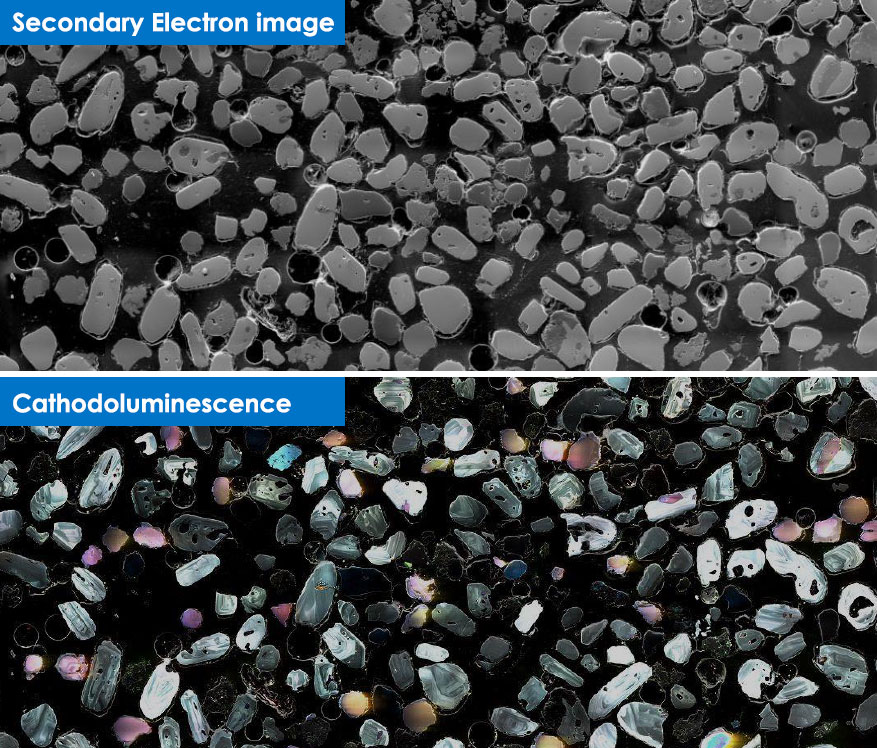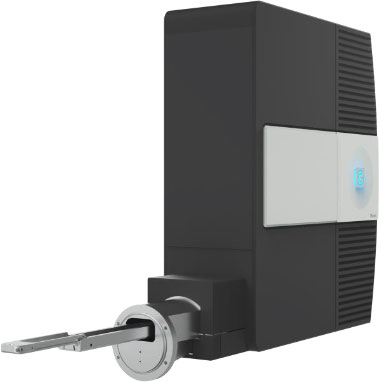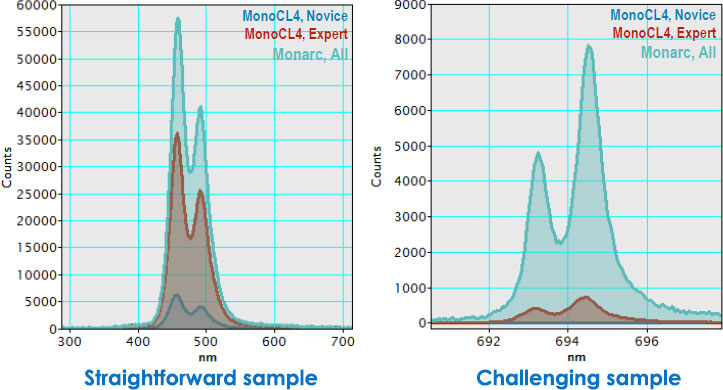SEM-Based Cathodoluminescence in Geology and Geoscience
SEM-based cathodoluminescence is now easier to use and interpret than ever before, making it more accessible and a viable technique for practical use in your lab. This enables you to reveal previously hidden information in geology and geoscience.
The new Gatan Monarc has easy alignment and auto tuning features, so now even new users and non-specialists can acquire high quality results.
Blue Scientific is the official distributor for Gatan systems for electron microscopes in the Nordic region (Norway, Sweden, Denmark, Finland, Iceland). For more information or quotes, please get in touch.
Gatan Monarc
More about geology
Contact us on +44 (0)1223 422 269 or info@blue-scientific.com
SEM-Based Cathodoluminescence
The Gatan Monarc is a CL (cathodoluminescence) system for use scanning or scanning transmission electron microscope (SEM or STEM). Traditionally it has been difficult to achieve useful results and interpret data from cathodoluminescence.
However, the Monarc has new alignment and auto-tuning features that make the technique more accessible than ever before. It’s now possible for a novice to acquire better data than could be previously be achieved even by an expert.
What is Cathodoluminescence?
SEM-based cathodoluminescence is a unique technique:
- Characterise the composition and optical and electronic properties of materials
- Correlate these properties with morphology, microstructure, composition and chemistry
- Micro- and sub-nanoscale resolution
Cathodoluminescence microscopy involves analysing luminescence: light or photons emmitted from the specimen when it is stimulated by the beam of an electron microscope. This luminescence ranges from ultraviolet to infrared wavelength ranges.
With an SEM-based CL system, you can correlate optical and structural properties down to the nanoscale.

SEM versus CL: Cathodoluminescence reveals hidden information about geological samples. Courtesy of Dr. C. Loehn, University of Arizona. (Click to enlarge)
CL Applications in Geology
In geology and geoscience, you can study trace element chemistry and geochemical effects, which enables you to reconstruct geological processes. You can reveal internal structures that might not be detectable via other techniques, to determine the composition, growth and provenance of minerals.
- Study geological history with CL maps of trace element distribution
- Analyse overgrowth, cementation, micro-fractures and fluid flow in metamorphic samples
- Understand zonation, late rims and provenance in geochronology research
- Reveal provenance and fracturability in oil and gas shale
- Identify trace elements and quantify concentrations with CL spectroscopy
- Determine thermobarometry (temperature and pressure history) in rare earth element mining

Gatan Monarc
The Monarc redefines what’s possible in SEM-based CL microscopy:
- New analytical capabilities, for the most complete understanding of CL
- Unprecedented sensitivity, for the highest quality spectra and images in the shortest time
- Accurate correlation: signals for morphology and composition matching are detected simultaneously
- Easy for everyone to use and acquire the best results
Easier to Use, with Automated Features
The Gatan Monarc overcomes the usual barriers that make CL difficult to use, so you can achieve high quality results easily:
- Fully automated alignment
- Recipe-driven operation and simpler workflow
- Permanently aligned optics for reproducible results
- Large field of view
Achieve High Quality Results
Experiment set-up is automated, with a routine to perfectly align your sample with both the Monarc system and the SEM. Permanently aligned optics ensure reliable, reproducible results over the short and long-term.
The example below compares results from various CL systems, acquired by novice and expert users. On the left is a straightforward sample, and on the right is a more complex experiment that would usually require a significant degree of experience to achieve. With self-optimising features, the novice user is able to acquire high quality results for both samples, better even the challenging specimen than the expert could previously achieve.
LEFT:
- Intense light emission
- Low spatial and temporal variability
- Low spectral resolution (5 nm) sufficient
RIGHT:
- Weak light emission
- High spatial and/or temporal variability
- High spectral resolution (<0.5 nm) necessary

Comparing results from users with different levels of expertise, on a simple and challenging samples. What was barely (if at all) possible for the expert, Monarc now makes accessible for every user.
Webinar
Watch Gatan’s recorded webinar for an overview of analysis modes for CL in geoscience applications:
Further Information and Demonstrations
If you’d like more information about SEM-based cathodoluminescence, please get in touch. Blue Scientific is the official Nordic distributor for Gatan, and we’re available to answer all your questions.
We can also arrange a demonstration, so you can see results for yourself, using your own samples – just get in touch:


